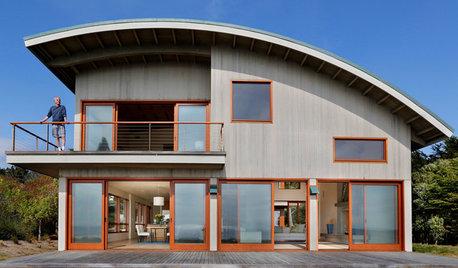2016 Results
drloyd
7 years ago
Featured Answer
Comments (17)
zeedman Zone 5 Wisconsin
7 years agoRelated Discussions
2016 Contest - Dwarf Project: New Big Dwarf
Comments (193)I like to get my seeds from vendors that grew their plants in areas similar to mine, if possible (however, most places are pretty different). The reason I like to do this is acclimatization. If a plant gets used to growing in a greenhouse, or a vastly different region, it might take a few years of growing in your climate to get it acclimatized sufficiently. I think acclimatization to your own personal soil and water is as important as acclimatization to the climate, however. Seeds from my friend a couple miles away just don't grow the same in my soil. Even my neighbor's yard is different with seeds from the same seed packet. When I say they don't grow the same, I mean the production and taste is different. The plants can still seem healthy....See More2016 Logan Labs Results, year 2
Comments (9)I'm glad it improved visually! Probably what happened was that your grass absorbed the majority of the nutrients before (or as or after) they hit the soil, leaving the soil in roughly the same place. The Pennington Fast Acting was the right response, but could you tell me how many pounds per thousand square feet that worked out to be? I'd need to include it, but you can use the numbers below to adjust the calcium levels and simply add (or defer) the amount required. We've been through a lot of the basics, so I'll skip those and only note changes where they're either interesting, significant, or otherwise amusing. pH 5.1: This actually isn't significantly different than 2015 and we really do want this to rise a lot yet. OM 2.1%: Rising 0.2 is within sampling differences, but I'm pleased to see it. Continue to mulch mow, mow all your fall leaves, and so on! Phosphorus 91: No significant difference. Again, we use starter to raise this and my recommendations are below. Calcium 40.8%: No significant change. This is one case where I do a split recommendation as I'd also like to lift your magnesium and I'm willing to accept a slow, but easier, change. We'll mostly be using the Pennington you're used to, but also pick up some good old, very cheap, dolomitic limestone (usually in a bag that costs $5 for 40 pounds, marked "Dolomitic Limestone" and available anywhere). There's some variance in magnesium levels, but that's not terribly significant here as I'm only nudging things. Magnesium 5.1%: Lower than I like. I chose dolomitic to make the application easier and the release slower--next year or the year after, when calcium comes up, we'll make a final adjustment more quickly and at a more accurately calculated rate. Right now, the dolomitic is fine and won't overshoot. Potassium 3.9%: Perfect! None required. Minor Elements: Iron and boron again. Iron: Like last year, keep going with the Milorganite when you can. It'll improve your lawn color. Boron <0.2: Deficient. While grasses aren't particularly sensitive to that, it should be improved--and really will subtly improve lawn quality. We use Milorganite as a carrier and 20 Mule Team Borax as the boron source. You can purchase 20 Mules at the grocery store in the laundry section. In a wheelbarrow or the like, dump the Milo. Spraying very, very lightly with water (I use a spray bottle like the kind people use to damp their clothes when they iron) will help the boron stick. Add the recommended amount of 20 Mule Team Borax and stir, spraying occasionally to get the stuff to stick to the Milo. Then apply over the recommended area. So if going for bag rate Milorganite (1 bag per 2,500 square feet), you'd add 12.5 tablespoons of 20 Mule Team Borax. Recommendations: Now-ish to June 1: Apply 5 tablespoons of 20 Mule Team Borax per thousand square feet. June 1: Feed with starter at the bag rate. June 15: Apply 7 pounds of Pennington Fast Lime per thousand square feet (adjust for what you added previously). Apply around 15 pounds of dolomitic limestone per thousand square feet--anything from around 12 to around 18 pounds is fine. July 1: Feed with starter at the bag rate. September 1: Feed with starter at the bag rate. October 1: Feed with starter at the bag rate. October 15: Apply 9 pounds of Pennington Fast Lime per thousand square feet (adjust for what you added previously if you still need to here)....See MoreFirst grafting result of 2016
Comments (8)Spacecoastfl, yes it was $10, I can't control myself that week. I went back 2 more times. Made some phone calls and HGC got rich after my phone calls....hehe. Yes, I got Honey Bee from Rinoa in 2014 and it still a tiny plant, but it has so many buds now. I wasn't talented, just practices made me better grafting person. I had some grafts lift up too, maybe the cut was not even? Marie...See MoreOne 2016 Grafting result.
Comments (5)Hi, Marie! I just tried to message you but it appears you've not activated Houzz messaging. You can do that by going to your profile, advanced settings, and checking off the appropriate boxes under who can message you. That will place a "Message" icon on your profile so others can message you. Alternately, please click on my username and send me a message so I can contact you via reply. Thanks....See Moreaftermidnight Zone7b B.C. Canada
7 years agohemnancy
7 years agohemnancy
7 years agoaftermidnight Zone7b B.C. Canada
7 years agolast modified: 7 years agozeedman Zone 5 Wisconsin
7 years agosea_kangaroo
7 years agosea_kangaroo
7 years agosea_kangaroo
7 years agoshuffles_gw
7 years agozeedman Zone 5 Wisconsin
7 years agolast modified: 7 years agoaftermidnight Zone7b B.C. Canada
7 years agosea_kangaroo
7 years agozeedman Zone 5 Wisconsin
7 years agosea_kangaroo
7 years agozeedman Zone 5 Wisconsin
7 years ago
Related Stories

HOUZZ TOURSHouzz Tour: Battling the Tides Results in a Wondrous House on the Water
A complex construction effort pays off big-time with unobstructed views of Blue Hill Bay in Maine
Full Story
KITCHEN DESIGNKitchen Confidential: 9 Trends to Watch for in 2016
Two top interior designers share their predictions for the coming year
Full Story
COLORColor of the Year: Off-White Is On Trend for 2016
See why four paint brands have chosen a shade of white as their hot hue for the new year
Full Story
DESIGNER SHOWCASESUnderstated Elegance at the 2016 Pasadena Showcase House of Design
Southern California designers put their signature touches on rooms in a Mission Revival show house
Full Story
DECORATING GUIDES25 Design Trends Coming to Homes Near You in 2016
From black stainless steel appliances to outdoor fabrics used indoors, these design ideas will be gaining steam in the new year
Full Story
INSIDE HOUZZData Watch: Home Renovation Professionals Bullish on 2016
Two new Houzz reports show that 2015’s confidence is continuing this year — but professionals still face several business challenges
Full Story
INSIDE HOUZZHow Much Does a Remodel Cost, and How Long Does It Take?
The 2016 Houzz & Home survey asked 120,000 Houzzers about their renovation projects. Here’s what they said
Full Story
LAUNDRY ROOMSTop 10 Trending Laundry Room Ideas on Houzz
Of all the laundry room photos uploaded to Houzz so far in 2016, these are the most popular. See why
Full Story
EVENTSReport From Italy: Mustard Yellow, Hidden Kitchens and More
See what our team in Italy discovered at Salone del Mobile 2016. Which new design idea speaks to you?
Full Story
DESIGNER SHOWCASESSan Francisco Decorator Showcase: Fresh Takes on Bold Design
The 2016 show house, opening Saturday, offers youthful refinement in a new locale
Full Story


aftermidnight Zone7b B.C. Canada